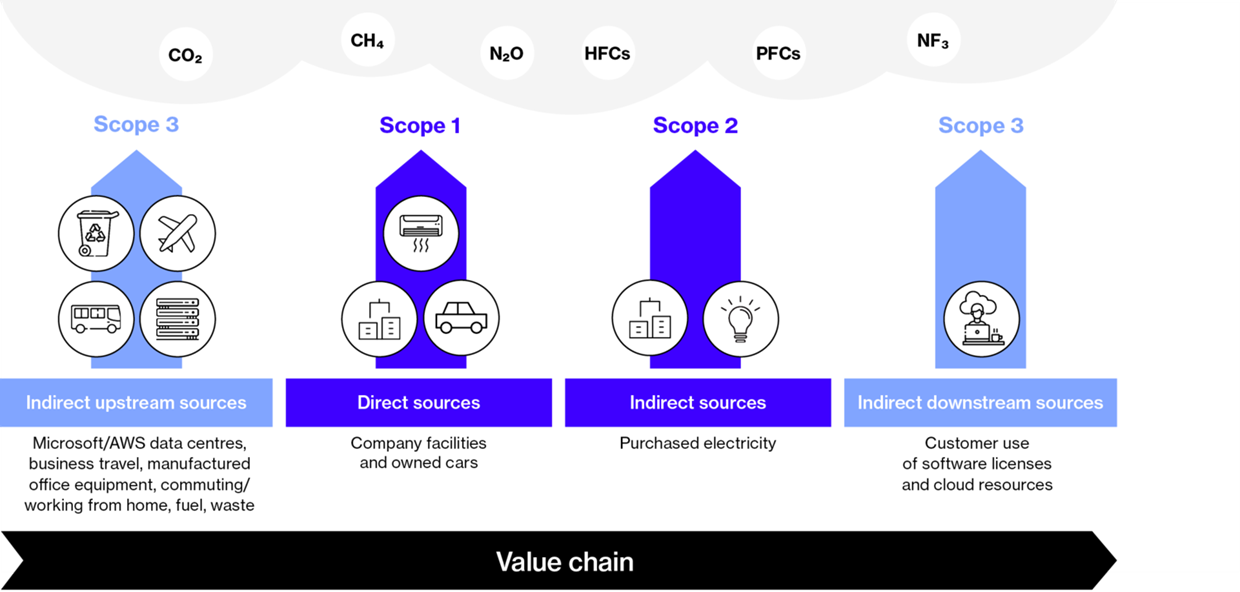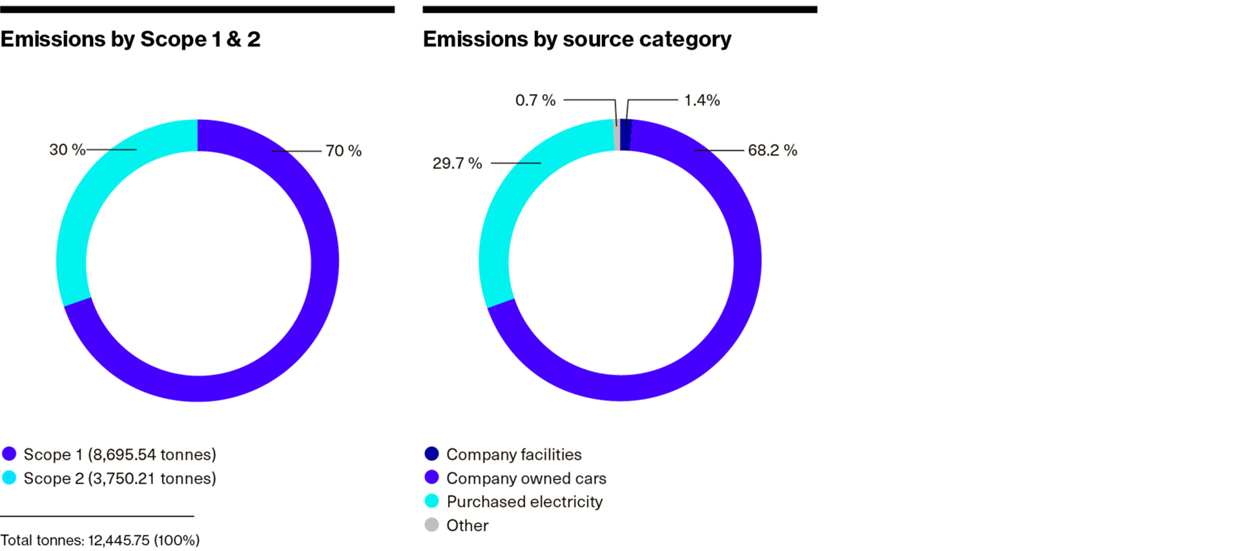Carbon footprint
In 2021 we began calculating our carbon footprint at a global level. Although some countries and regions, such as DACH and the UK, had already begun collecting their data, we made it a priority to extend this initative globally. An accurate carbon footprint allows us to reduce our emissions within our organisation, in terms of location, scope and activity.
Emissions across our value chain

SoftwareOne aligns itself with the Greenhouse Gas Protocol where emissions are classified according to where they occur in the value chain. While we can control our Scope 1 and 2 emissions from company-owned and rented cars and offices, and purchased electricity, most emissions occur in our Scope 3 where we have little control. The Greenhouse Gas Protocol Scope 3 accounting standards provides limited guidance on how to address these emissions, especially for those companies in a unique position such as ourselves. Due to the nature of our business, we do not transport and distribute finished goods. However, these emissions are largely attributed to the sold software licenses and cloud-based solutions which are created and powered by our suppliers. Business travel and our employees’ commuting also contribute to our upstream Scope 3 emissions.

Our carbon footprint calculation involved volunteers from each of the SoftwareOne subsidiaries. To calculate their carbon footprint, these volunteers collaborated across the various internal departments and gathered their activity and spend-based data from their country. This data was collated and verified by our third party carbon footprint platform which bases its calculations on a wide range of emissions factors.
Due to the global pandemic in 2020 and 2021, our carbon footprint increased under all three scopes in 2022. As such, our 2021 data is not an accurate representation of our baseline carbon footprint. Therefore, we will use 2022 as our baseline year.